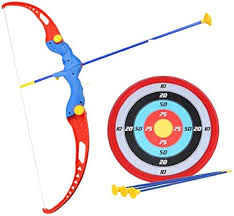Archery has a rich history that dates back thousands of years. Initially developed for hunting and military purposes, archery played a significant role in ancient civilizations.
Ancient Origins
- Prehistoric Times: Evidence of early archery dates back to the Stone Age, with ancient bows and arrows found in archaeological sites.
- Ancient Egypt and Mesopotamia: Archery was integral to warfare and hunting in ancient Egypt and Mesopotamia. Skilled archers were highly valued in these societies.
- Medieval Europe: The longbow became a prominent weapon in medieval Europe, particularly during the Hundred Years’ War. The English longbowmen were renowned for their effectiveness in battle.
Modern Archery
- 19th Century: Archery evolved into a sport in the 19th century, with the formation of societies and the establishment of formal competitions.
- 20th Century and Beyond: Archery gained international recognition with its inclusion in the Olympic Games and the growth of recreational and competitive archery.
Types of Archery
Archery encompasses various styles and disciplines, each with its own rules and techniques. Here are the main types of archery:
1. Target Archery
Target archery is a popular form of the sport where archers shoot arrows at a stationary target from a set distance. This type of archery is often seen in Olympic events and local competitions.
Key Features:
- Target Types: Standard target faces with concentric rings.
- Distances: Different distances based on the competition level (e.g., 70 meters for Olympic archery).
2. Field Archery
Field archery involves shooting at targets of varying sizes and distances in a natural outdoor setting. It often includes a mix of open terrain and wooded areas, adding an element of unpredictability.
Key Features:
- Target Types: 3D animal targets and standard targets.
- Course Layout: A course with different shooting distances and angles.
3. Bowhunting
Bowhunting is the practice of hunting game animals using a bow and arrow. It requires a combination of archery skills and hunting knowledge.
Key Features:
- Equipment: Typically uses compound bows or traditional longbows.
- Techniques: Focuses on stealth, accuracy, and knowledge of wildlife.
4. Traditional Archery
Traditional archery emphasizes using historical or classic bows, such as longbows and recurves. It often involves shooting without modern accessories.
Key Features:
- Bows: Longbows, recurves, and self-bows.
- Equipment: Minimal use of modern aids (e.g., sights or stabilizers).
5. Compound Archery
Compound archery uses compound bows, which have a system of pulleys and cables to increase accuracy and reduce the effort needed to hold the bow at full draw.
Key Features:
- Bows: Compound bows with mechanical advantage.
- Accessories: Often includes sights, stabilizers, and release aids.
Archery Equipment
The right equipment is essential for successful archery. Here’s an overview of the key components:
1. Bows
- Recurve Bow: Features curved limbs and is often used in Olympic and target archery.
- Compound Bow: Equipped with a system of pulleys and cams for enhanced accuracy and reduced draw effort.
- Longbow: A traditional bow with a simple design and long, curved limbs.
2. Arrows
- Shaft: The main body of the arrow, made from materials like carbon, aluminum, or wood.
- Fletchings: The feathers or vanes at the rear of the arrow that stabilize its flight.
- Nock: The small plastic or metal piece at the end of the arrow that fits onto the bowstring.
- Tip: The pointed end of the arrow, which can vary based on its intended use (e.g., target tips or broadheads for hunting).
3. Quivers
- Back Quiver: Worn on the back and holds arrows for easy access.
- Hip Quiver: Worn on the hip and provides a convenient way to carry arrows.
4. Protective Gear
- Armguard: Protects the forearm from the bowstring during release.
- Finger Tab or Glove: Protects the fingers when drawing and releasing the bowstring.
- Chest Guard: Prevents the bowstring from hitting the chest.
Getting Started with Archery
If you’re interested in taking up archery, here are some steps to help you get started:
1. Find a Local Archery Range
Look for local archery ranges or clubs where you can practice and receive instruction. Many ranges offer beginner classes and equipment rental.
2. Choose the Right Bow
Consult with experienced archers or instructors to select a bow that suits your skill level and preferences. Beginners often start with a recurve or compound bow.
3. Learn Proper Techniques
Take lessons from a certified instructor to learn proper shooting techniques, safety practices, and equipment handling. Proper technique is crucial for accuracy and preventing injuries.
4. Practice Regularly
Consistent practice is key to improving your archery skills. Set aside time for regular practice and focus on refining your technique and accuracy.
5. Participate in Competitions
As you gain experience, consider participating in local or regional archery competitions. Competing can help you set goals, measure your progress, and connect with other archers.
Conclusion
Archery is a timeless sport that combines precision, skill, and tradition. From its ancient origins to modern-day competitions, archery offers a rewarding experience for enthusiasts of all levels. By understanding the different types of archery, selecting the right equipment, and practicing regularly, you can enjoy the art and sport of archery while honing your skills and achieving your goals. Whether you’re aiming for a bullseye or exploring the history and tradition of archery, this sport provides a unique and fulfilling challenge.




